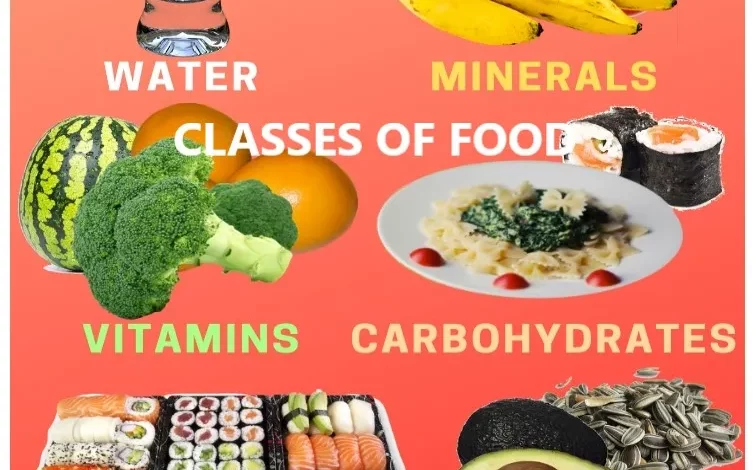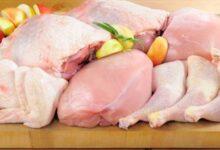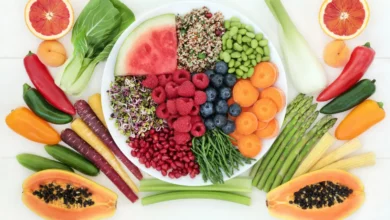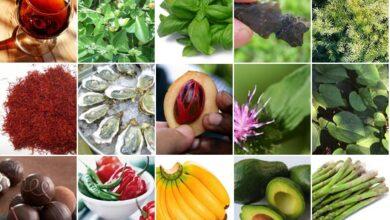
Classes of food with examples and functions – be in the know
We are what we consume. It is crucial to eat healthfully because of this, and fortunately for us, science can assist us in doing so. Did you know that the types of foods we eat can be categorized according to the nutrients they provide? Continue reading to learn about the many food classes, their uses, and their suppliers.Information Guide Nigeria
Today’s enormous variety of foods creates numerous food groups that are exceedingly challenging to categorize. It is possible to categorize them, though. Dietology is a discipline that advances daily, and the information it produces can be utilized to understand what we eat and why. To assist you in maintaining a balanced diet, this guide includes the dietary categories with examples.Classes of food with examples and functions – be in the know
👉 Relocate to Canada Today!
Live, Study and Work in Canada. No Payment is Required! Hurry Now click here to Apply >> Immigrate to CanadaRead Also: 20 Best Food Processors in Nigeria and their Prices
What are the classes of food and their sources?
There are seven major classes of food based on their nutrient properties:
- Carbohydrates – These are energy-giving nutrients found in potatoes, rice, wheat, maize, and other starches.
- Proteins – These are bodybuilding nutrients found in meat, legumes, and dairy products.
- Fats – These are found in nuts and fruits like avocados.
- Fiber – These are necessary for digestion and are found in fruits and vegetables.
- Minerals – These are necessary for improving bodily functions and are found in most foods, fruits, and vegetables
- Vitamins – These boost immunity and are found in fruits and vegetables.
- Water – This is used in the creation of bodily fluids and is found in fruits, juices, and other liquids.
Read Also: How to Prepare Amala with Ewedu and gbegiri (Abula)
7 classes of food and their functions
Both macronutrients and micronutrients are used to categorize foods. Water, fiber, fats, proteins, and carbs are examples of macronutrients. They are extremely important to our bodies.
Vitamins and minerals are examples of micronutrients. They are required by our bodies in much smaller amounts. Macronutrients give the body the energy it needs to survive and thrive.
Some of these nutrients are constantly required by the body because they give off continual energy. Because of the nutrient imbalance, people’s health deteriorates. In our bodies, nutrients can both be insufficient and excessive. Here is a list of the different food categories, along with images.7 Best Vivo Mobile Phones in Nigeria and their Prices
1. Carbohydrates
Hydrogen, oxygen, and carbon atoms make up the molecules that makeup carbohydrates. The number of monomer units in them allows for classification. They can be classified as polysaccharides, monosaccharides, and disaccharides as a result. Rice, noodles, bread, pasta, and other grain-based foods all include carbohydrates.
In comparison to other saccharides, polysaccharides are more complex and require more time to digest. The blood can only absorb the simplest sugar units found in various dietary groups. The blood may easily digest basic carbohydrates. However, it may result in an unnatural rise in blood sugar levels, which can cause vascular and heart disorders.
👉 Relocate to Canada Today!
Live, Study and Work in Canada. No Payment is Required! Hurry Now click here to Apply >> Immigrate to CanadaRead Also: How to Prepare Ojojo (Yam fritters) in Nigeria
2. Protein
Hydrogen, oxygen, hydrogen, carbon, and nitrogen make up the majority of protein molecules. This nitrogen is a crucial component of the amino acids that our body needs. Protein-rich foods serve a variety of purposes, including cell formation, muscle maintenance, and a metabolism enhancement.20 Best Microwave Ovens in Nigeria and their prices
Protein makes up the majority of our body’s structure. Numerous thousands of amino acids make up each protein molecule. These substances are necessary for our body to make new proteins and sustain the ones it already has.
Protein that can be made in our bodies is referred to as non-essential protein, whereas protein that cannot be made in our bodies is referred to as a non-essential protein. To survive, all creatures required the necessary proteins. Beans, dairy products, fish, meat, eggs, and other foods contain this vitamin.
3. Fats
Several fatty acids often make up one fat molecule. These fatty acids are composed of several long hydrogen and carbon atom chains. Unsaturated and saturated fats can be used to categorize all fats. All of the carbon atoms in saturated fats are linked to hydrogen atoms in this way. Unsaturated fats are those in which a few hydrogen molecules are double-bonded to the carbon atom.NYSC Portal
Fats are a source of energy, are utilized to regulate energy and aid in temperature control and vitamin absorption. Foods like dairy, meat, fish, whole eggs, vegetables, nuts, and so forth all contain fats.
4. Fiber
A type of carbohydrate known as fiber is one that humans cannot fully digest. Cellulose typically makes up the fiber in food. It is a substantial carbohydrate that our body is unable to digest due to a lack of enzymes. Fruits (such as oranges, currants, and pears), vegetables (such as onions, corn, broccoli, and green beans), pulses (such as beans and lentils), and whole grains all contain fiber (cereals).200 Romantic Love Message for her
Our digestive system needs fiber to stay strong and prepared to do its job. Additionally, it helps with processes like keeping blood sugar and cholesterol levels stable. Diabetes, bowel cancer, and coronary heart disease can all be avoided with a diet high in fiber.
Read Also: How To Prepare African Tripe Stew
5. Minerals
Chemical elements that are required by living organisms are referred to as minerals. Although our bodies don’t need elements, they are nonetheless a vital component in maintaining our health. Calcium, Iron, Magnesium, Potassium, Zinc, and other minerals are among them. These minerals can be found in dairy products, meat, fish, poultry, cereals, and other foods.
Minerals have a variety of purposes, including serving as the basis for our bones, teeth, and muscles, transporting oxygen throughout our bodies, and maintaining fluid balance.
6. Vitamins
Vitamins are another nutrient that is not needed in large quantities but plays an essential role in our body. Examples of vitamins include Thiamine, Riboflavin, niacin, Pantothenic acid, Biotin, Pyridoxine, Folic acid, Cobalamin, Ascorbic acid, and so on. Vitamins are an essential part of our immune system as it helps us to regulate and maintain the healthy process of our body. They can be found in almost any product on Earth.105 Good Morning My Love Messages
7. Water
Water is an essential part of our food. Human is essentially 80% water. Therefore, we need to keep that balance to survive and stay healthy. Fortunately, water can be found in any product. It is a simple combination of hydrogen and oxygen, but we cannot survive without this.
Read Also: How To Prepare Egusi Pepper Soup
Conclusion
How many different types of food are there? You now understand the seven dietary groups that are essential to our survival. Remember that a healthy diet contributes to a long life. You must eat all the nutrients your body needs in order for it to survive on this harsh planet. You can achieve this by combining and balancing the fundamental components of a healthy diet, such as fat, carbohydrates, water, and others.Jamb Portal








